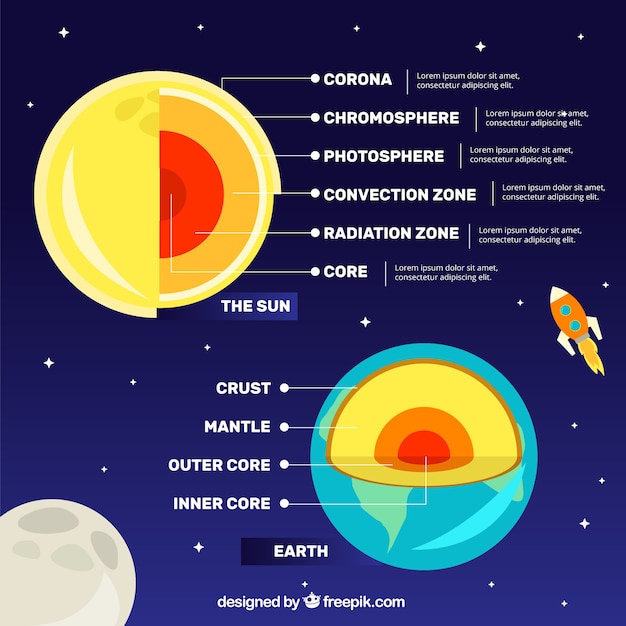Fascinating Facts about Pluto

Pluto was discovered on February 18, 1930, by astronomer Clyde Tombaugh.
Pluto is named after the Roman god of the underworld.
Pluto has a highly elliptical orbit, which means it sometimes gets closer to the Sun than Neptune.
Pluto is the largest known dwarf planet in our solar system.
Once considered the ninth planet, Pluto was reclassified as a dwarf planet in 2006.
Pluto’s diameter is about 1,473 miles (2,370 kilometers).
Pluto’s surface is covered in mostly nitrogen ice, with traces of methane and carbon monoxide.
Pluto has a thin atmosphere composed mostly of nitrogen, with a small amount of methane.
Pluto’s most famous feature is the heart-shaped region on its surface called Tombaugh Regio.
Pluto has five known moons: Charon, Styx, Nix, Kerberos, and Hydra.
Charon, Pluto’s largest moon, is about half the size of Pluto and has a nearly synchronous orbit.
Pluto and Charon are often referred to as a double dwarf planet system.
Pluto’s surface temperatures can reach as low as -375 degrees Fahrenheit (-225 degrees Celsius).
A year on Pluto lasts about 248 Earth years.
A day on Pluto is about 6.4 Earth days long.
Pluto is classified as a Kuiper Belt object, as it resides in the Kuiper Belt region past Neptune’s orbit.
Pluto was visited by the New Horizons spacecraft in 2015, providing our first detailed images of the dwarf planet.
Fascinating Facts about Pluto part 2
The New Horizons mission revealed that Pluto has stunningly diverse landscapes with mountain ranges, icy plains, and possible cryovolcanoes.
Pluto’s mountains can reach heights of up to 11,000 feet (3,500 meters).
Pluto has an ice cap on its southern pole that is made of nitrogen and methane.
Several craters on Pluto are named after famous explorers, scientists, and science fiction authors.
The gravity on Pluto is only about 6% of Earth’s gravity.
Pluto has a reddish-brown color due to the presence of tholins, organic compounds formed from methane and nitrogen in its atmosphere.
Mountains on Pluto appear to be made of water ice rather than rock.
Despite its small size, Pluto has an intricate geological history with evidence of tectonic activity and ancient glaciers.
Pluto’s distance from the Sun causes its surface to be bombarded by cosmic rays and a harsh radiation environment.
The Kuiper Belt, where Pluto is located, is believed to be a relic of the early solar system.
Pluto has a highly eccentric orbit, which sometimes brings it closer to the Sun than Neptune.
It takes sunlight about five and a half hours to reach Pluto.
Pluto’s atmosphere can freeze and collapse onto the planet’s surface during its long winters.
Pluto’s atmosphere is not dense enough to support human life as we know it.
Due to its small size and low gravity, Pluto is not spherical but rather has a slightly flattened shape.
The average distance between Pluto and the Sun is about 3.67 billion miles (5.91 billion kilometers).
Pluto’s orbit is inclined at an angle of about 17 degrees to the plane of the solar system.
Pluto was named by 11-year-old schoolgirl Venetia Burney, who suggested the name to her grandfather, an astronomy professor.
It took the New Horizons spacecraft about nine and a half years to reach Pluto.
Pluto belongs to a group of objects in the Kuiper Belt called plutinos with similar orbital resonances.
In mythology, Pluto was the ruler of the underworld, while his Greek equivalent was Hades.
The discovery of Pluto helped astronomers refine their understanding of the outer regions of our solar system.
The demotion of Pluto from planet status sparked a debate among scientists and the public that continues to this day.
There are ongoing discussions about reclassifying Pluto as a planet again.
Pluto has an average density lower than that of Earth, indicating a higher proportion of ice in its composition.
Despite its distance from the Sun, Pluto experiences distinct seasons due to its axial tilt.
The New Horizons mission discovered a possible subsurface ocean beneath Pluto’s frozen surface.
Pluto’s complex orbit is influenced by the gravitational interactions with Neptune and other objects in the Kuiper Belt.